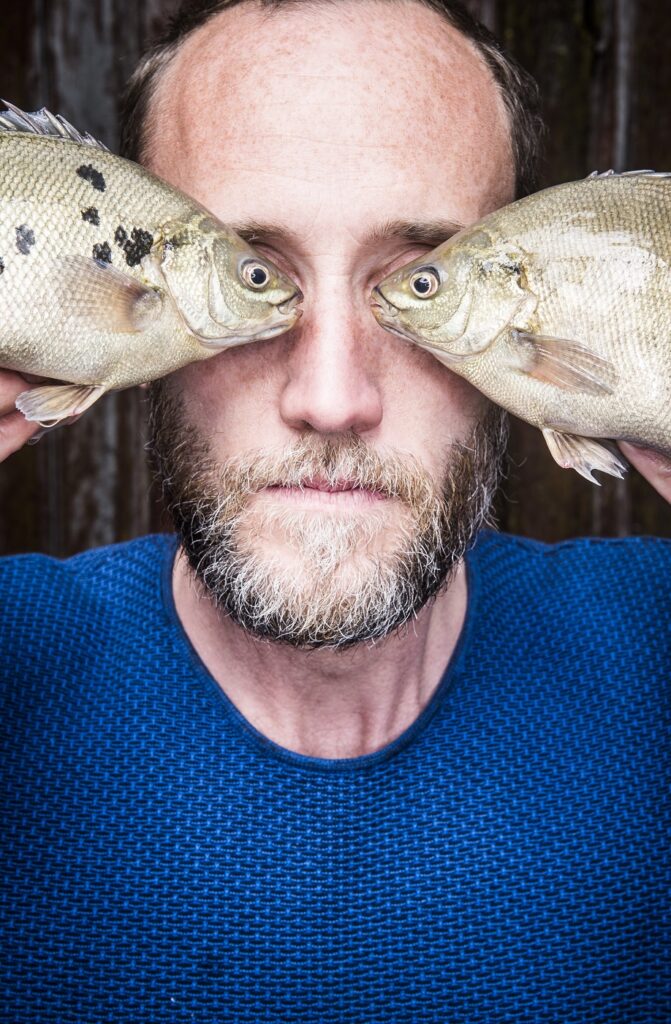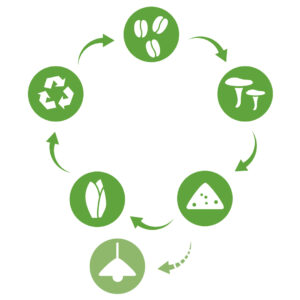Have you noticed that, if you put the ends of a line (or a piece of string) together, you create a circle? That is exactly what happens when you reduce waste to its raw materials. You reconnect the end of the line to the beginning and the value remains inside the economic circle.
In the old linear economy, when a product has reached the end of its life cycle, it ends up on the rubbish heap. If that product can be dismantled to become a raw material, then it creates opportunities to reduce the size of that rubbish heap.
Has rubbish become the new gold?
The fact that waste is actually a raw material, and is often available for free or very cheaply, is something that increasingly more companies are starting to realise and are proceeding to work with this availability creatively.
An example of this is the Dutch furniture brand Planq (www.planqproducts.com), which transforms discarded and overstocked clothing into a high-quality material. In this way, the gap between design and sustainability is bridged. Through a process of fiberisation and mixing with bioplastics, a pressed material is created that is used to give the furniture a unique look. Each chair made from recycled denim saves approximately 11,700 litres of drinking water. Without bioplastics, the textile is processed into felt for acoustic solutions.
Did you know that recycling textiles results in the highest carbon dioxide (CO2) savings of all recyclable rubbish streams? Textiles can be reused in many ways, as long as they have not come into contact with general waste. Whichever process is used is far less labour-intensive than starting production from scratch. More and more clothing brands are realising this and are producing new collections using recycled textiles.
 The by-products of a production process can also become new items for other organisations. In Deinze, Belgium, the family business Tomato Masters (https://tomatomasters.be/) and the startup business Aqua4c (https://www.omegabaars.be/) have connected their companies in a completely closed circular system.
The by-products of a production process can also become new items for other organisations. In Deinze, Belgium, the family business Tomato Masters (https://tomatomasters.be/) and the startup business Aqua4c (https://www.omegabaars.be/) have connected their companies in a completely closed circular system.
The tomato nursery has been growing tomatoes since 1966. Throughout the years, and across generations, they have searched for optimisations relating to quality, production and the environment. For example, the company has its own combined heat and power module and produces heat and CO2 for the greenhouses, as well as electricity for over 3,000 families. Tomato Masters supplies this electricity, heat and also the rainwater, which has been recovered from the greenhouse roofs, to the neighbouring Aqua4C. This fish farm breeds ‘omegabaars’, a sustainable Belgian fish that eats only vegetarian food. In other words, no fishing is needed to feed the omegabaars. In return, the nursery supplies Tomato Masters with the waste water used by the fish, which is full of nutrients and is therefore excellent feed water.
A prerequisite for upgrading waste to a raw material is that its composition should be as simple as possible. Have you even seen the images of large festival campsites the day after a festival? Although the festivalgoers have left, many of their tents are still there, as they’ve just been left behind. Earlier generations of festivalgoers could never have imagined a tent being a single use item. Let’s hope that festivalgoers of the next and future generations won’t either.
The Dutch company named Kartent (https://kartent.com/) is already working to solve these issues by creating cardboard tent villages. If you can’t bring your own sustainable tent, you can rent one. They are waterproof, sturdy and very trendy. Although these tents only last for one festival, their life doesn’t end there. The cardboard gets a new purpose in doll’s houses, other toys, and children’s furniture that can withstand a battering. Unlike the classic tents, reusing the raw material is relatively easy because the tents are made of only one material.
Reading coffee grounds
Coffee grounds and citrus peels also have the benefit of simplicity, yet what do they have in common? That is a question Unwaste (https://www.unwaste.nl/) answers with the following message: “Your skin loves it! Coffee grounds are a natural scrubber; citrus cleans and smells delicious.” After noticing that a volume of used coffee grounds and orange peels as big as the size of 500 Empire State Buildings is burned as worthless waste around the world every year, Unwaste smelt a golden opportunity and started producing SOOP, a brand of wonderful soaps that upgrade coffee grounds and citrus peelings as valuable raw materials, without any chemical additives and plastics. Your breakfast will never look the same again.
 Another well-known example of reusing coffee grounds is as a growth medium for mushrooms. Containing Mushrooms (https://containingmushrooms.nl) grows oyster mushrooms in containers using coffee grounds from companies and then gives oyster mushrooms back to those same companies. PermaFungi (https://www.permafungi.be/) in Brussels is a cooperative that uses coffee grounds to grow organic oyster mushrooms and then makes a natural fertiliser called ‘Champost’ for growing vegetables. They take it a step further by processing part of the general waste created during the oyster mushroom cultivation into a biodegradable material that can replace plastic. This has been applied in eco designs such as the LumiFungi lamp.
Another well-known example of reusing coffee grounds is as a growth medium for mushrooms. Containing Mushrooms (https://containingmushrooms.nl) grows oyster mushrooms in containers using coffee grounds from companies and then gives oyster mushrooms back to those same companies. PermaFungi (https://www.permafungi.be/) in Brussels is a cooperative that uses coffee grounds to grow organic oyster mushrooms and then makes a natural fertiliser called ‘Champost’ for growing vegetables. They take it a step further by processing part of the general waste created during the oyster mushroom cultivation into a biodegradable material that can replace plastic. This has been applied in eco designs such as the LumiFungi lamp.
If you want to get started yourself, just let your creativity run free.
The differences between these types of projects lie in the creative element. Reusing is not boring and is certainly not invisible. On the contrary, it shows the power that lies in something which you previously saw as worthless waste. It surprises you and makes you laugh. It also makes you think. Above all, it gives you a lot of ideas. That’s why reusing starts with rethinking. It’s about realising that the city is a gold mine, and finding out where there is an abundance of something if you look closely enough.
The most striking example must be electronics. It takes much less energy to extract raw materials from recycling than from ores, and the concentration of valuable metals and minerals in electronic waste is also up to fifty times greater than in ores from mines. There is a reason why the city is called an urban mine. Like most people, you’ve probably got a few old mobile phones hidden somewhere in a drawer.
 The change starts with a review about what you need as a company or as a starting entrepreneur and you have too much. Although the clothing and food sectors may find matches relatively easily within these sectors, it is clearly important to zoom out and go past your own company or even your own sector in order to identify possible collaborations. Just think of the coffee grounds that will always be wasted within the coffee industry, yet could also offer opportunities for mushroom growers and natural cosmetics.
The change starts with a review about what you need as a company or as a starting entrepreneur and you have too much. Although the clothing and food sectors may find matches relatively easily within these sectors, it is clearly important to zoom out and go past your own company or even your own sector in order to identify possible collaborations. Just think of the coffee grounds that will always be wasted within the coffee industry, yet could also offer opportunities for mushroom growers and natural cosmetics.
If you need help with your search, EME (Excess Materials Exchange, www.excessmaterialsexchange.com) is a digital matching platform that works with you to find new high-quality recycling options for materials and (waste) products. They map the potential of your material streams and go a step further by looking for new possibilities and partners.
After a while, putting the ends of a line together and creating new circles will become like a game for you. The only side effect is that every time you throw something in the rubbish, you might start seeing circles.
—
Are you already a sustainable entrepreneur or do you want to get started? Download the free Leap Model, which is a step-by-step plan to get your organisation on track sustainably.
This article was created with the support of Circular Flanders.


Leave a reply